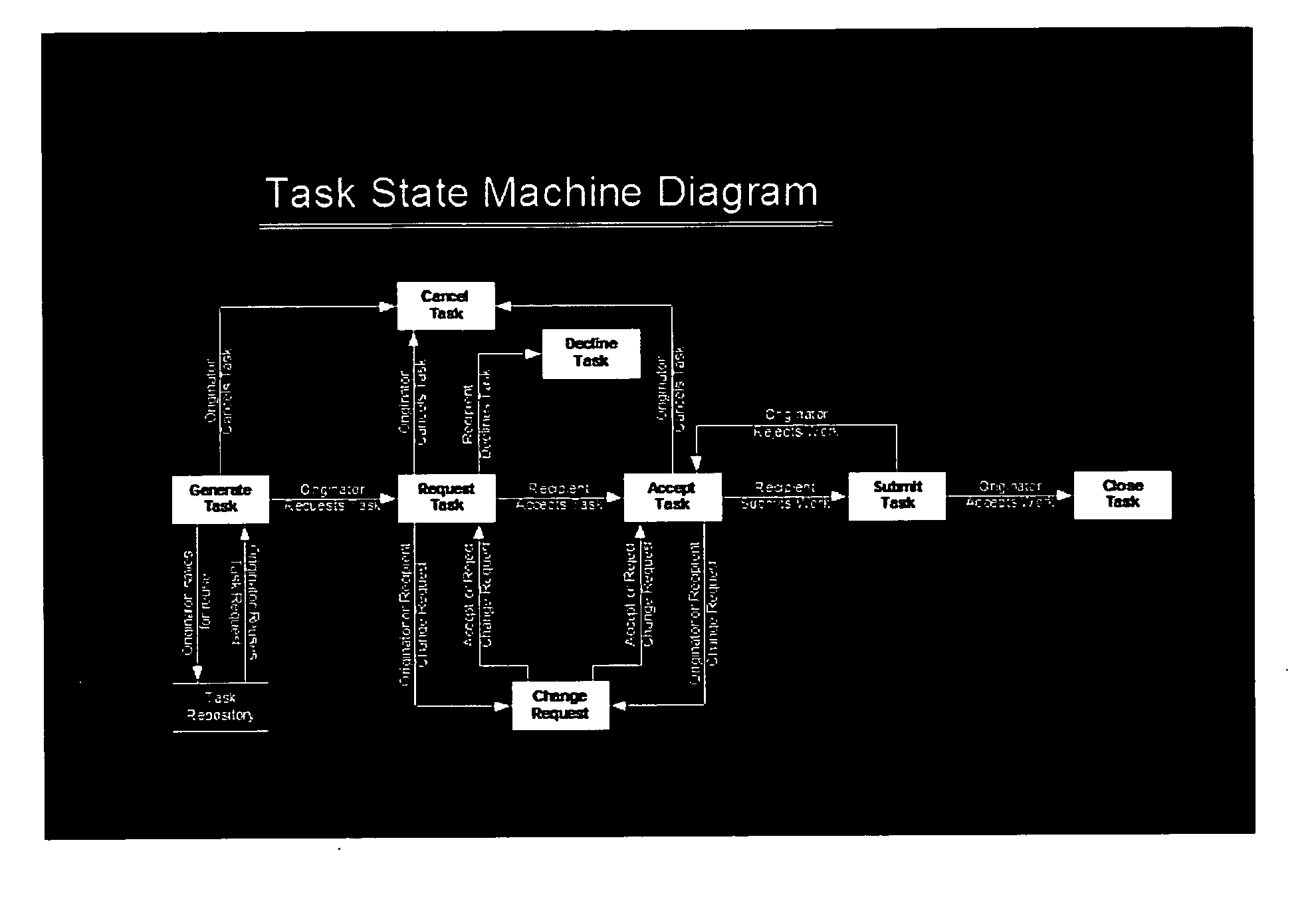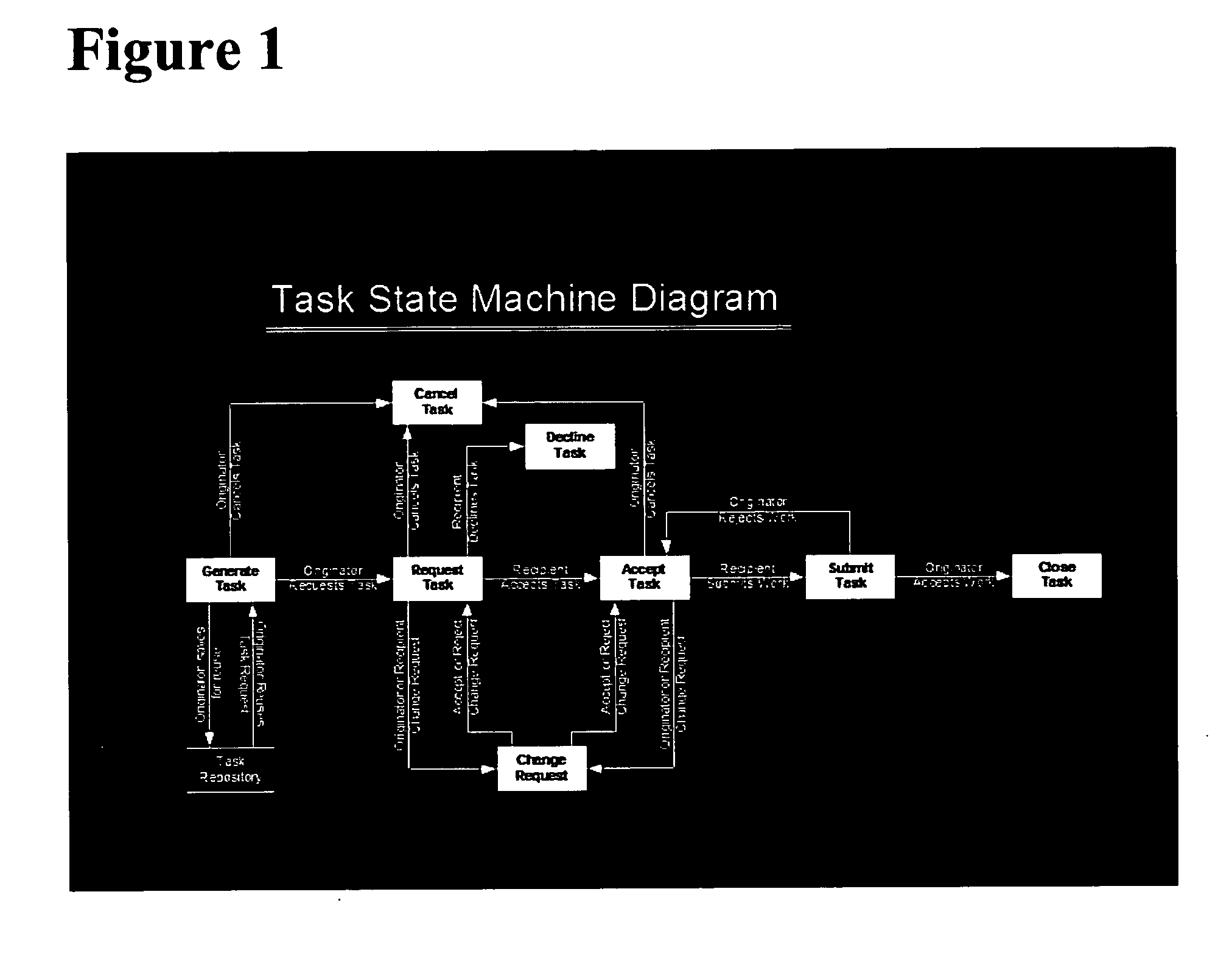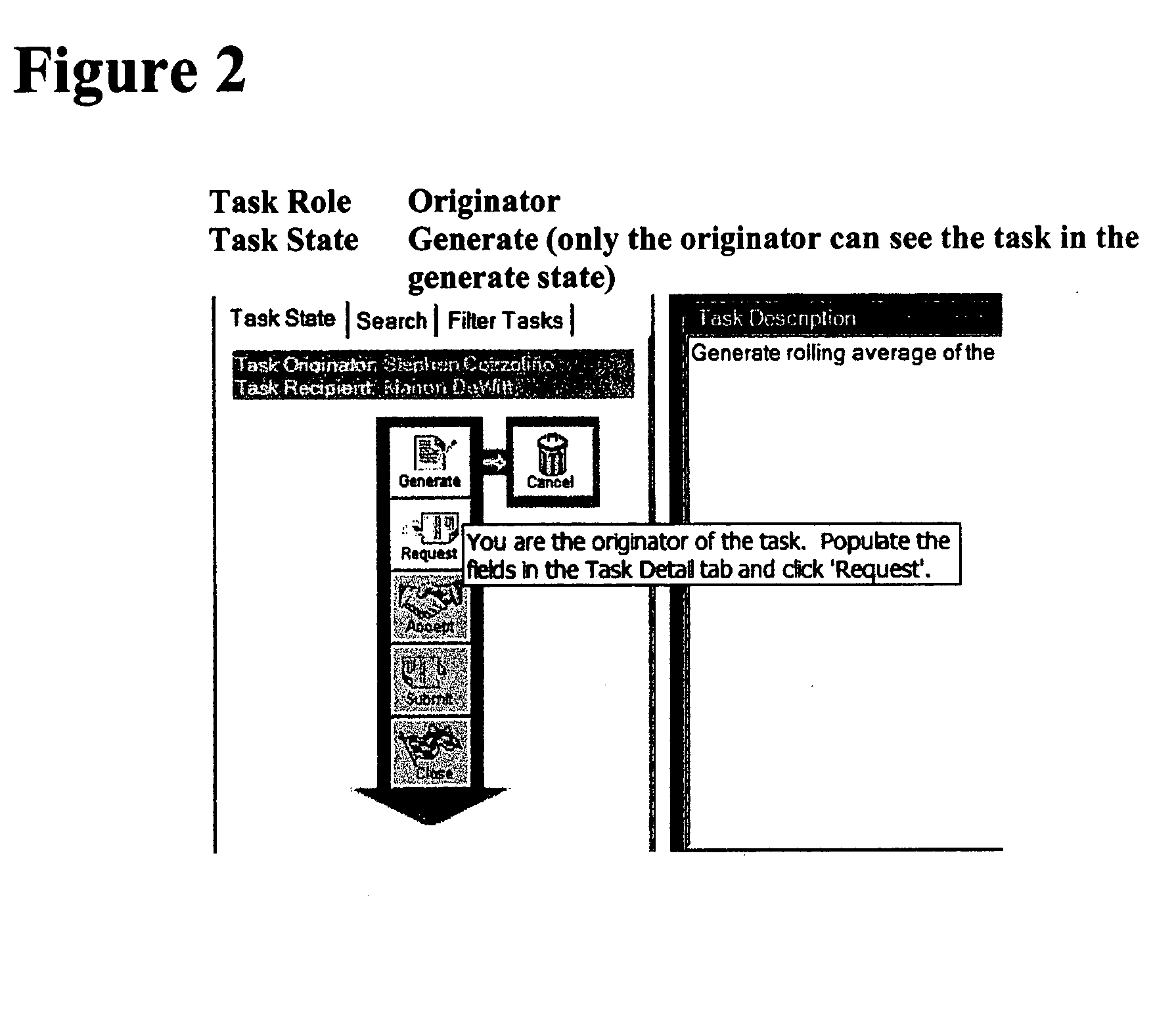Organizationally interactive task management and commitment management system in a matrix based organizational environment
a task management and organizational environment technology, applied in the direction of instruments, computing, electric digital data processing, etc., can solve the problems of ineffective work of inline managers in charge of employee performance appraisals, complex task management process, and inability to create and manage project tasks in a matrix
- Summary
- Abstract
- Description
- Claims
- Application Information
AI Technical Summary
Benefits of technology
Problems solved by technology
Method used
Image
Examples
Embodiment Construction
[0087] In the course of the last two decades, organizations have expanded their reach and tailored their products to meet the needs of different geographically located markets. Further, the Internet has shrunk the world into an on-screen directory of products and services thereby increasing every competitor's reach. These long standing trends have increased competition and forced companies to restructure from a bureaucratic command and control to a hierarchy of employees who play cross-functional roles in matrix groups that service dynamic needs.
[0088] The paradigm shift in organizational structure has not been matched by a corresponding shift in employee motivation. Despite the structural changes, employees feel obligated almost entirely to tasks that are requested by direct managers yet feel little obligation to perform tasks requested by fellow employees because they are not rewarded for performing the work or reprimanded for declining the work. This should come as no surprise s...
PUM
 Login to View More
Login to View More Abstract
Description
Claims
Application Information
 Login to View More
Login to View More - R&D
- Intellectual Property
- Life Sciences
- Materials
- Tech Scout
- Unparalleled Data Quality
- Higher Quality Content
- 60% Fewer Hallucinations
Browse by: Latest US Patents, China's latest patents, Technical Efficacy Thesaurus, Application Domain, Technology Topic, Popular Technical Reports.
© 2025 PatSnap. All rights reserved.Legal|Privacy policy|Modern Slavery Act Transparency Statement|Sitemap|About US| Contact US: help@patsnap.com



